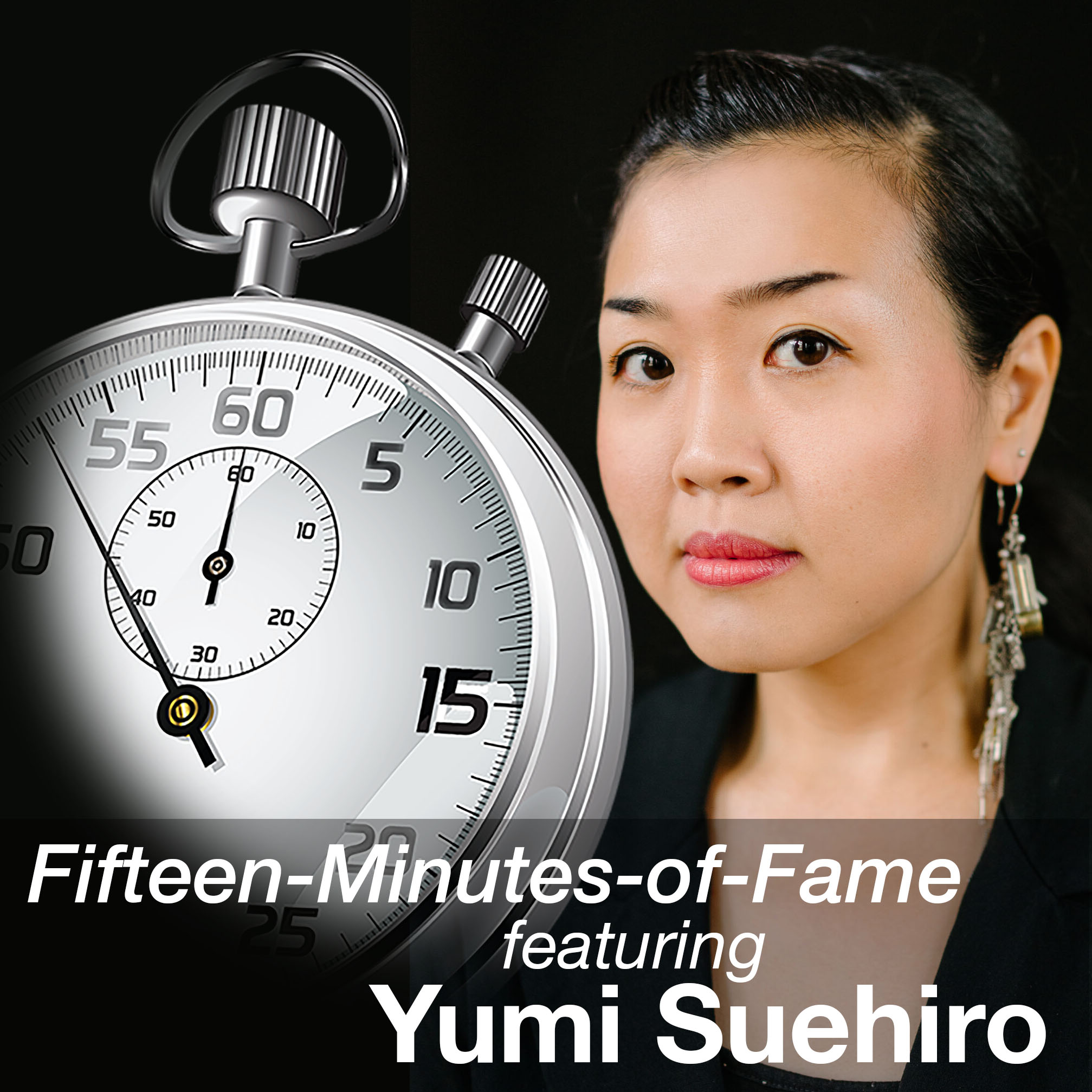| Click Here to View Issue April 12th, 2025 | |||||||
|
|||||||

|
|||||||
Celebrating 15 Years of Fifteen-Minutes-of-Fame: Contributions to New MusicBy Lauren DeanFor fifteen years, Fifteen-Minutes-of-Fame has been a platform for new music—a form that extends the classical music tradition through newly created works by living composers. “To keep a genre alive, it has to have a new repertoire and new listeners,” says new music composer and clavichord player Monica Chew. And to achieve those things requires time, repetition, and a place for composers and musicians alike to distribute and perform their new works. In recent interviews with new music artists, Fifteen-Minutes-of-Fame was highlighted as an establishment in the field, which contributes to keeping the genre alive, while also expanding and diversifying the form. “It’s a special project,” says composer and guitarist Rodrigo Baggio, whose style includes jazz and Brazilian, but not so much classical. For him, the platform is a place for artists to crossover—rather than stay confined to circles of classical musicians or other jazz players, for example—and to expand musically and aesthetically. “Definitely there’s nothing like it in Brazil,” he says, adding that “bringing together composers and musicians from all over the world is a special thing in the musical community.” 
On the same topic, Craig Hultgren, who has performed twice with Fifteen-Minutes-of-Fame as a solo cellist, recalls his first performance in 2013 where the call for submissions specifically aimed to upset the status quo. Themed “Occupy Cello” —inspired by the then-recent Occupy Wall Street Movement— the call asked composers to disrupt traditional techniques and composition strategies of works for cello. It was a hit with both artists and audiences, garnering over 1,000 YouTube views once the live performance posted. Soprano Jenny Ribeiro, speaking about a new series in 2024 for unaccompanied singers, says “It’s important and new.” It gives singers an opportunity to bring anything that suits their voice, regardless of what the pianist wants, and “inhabit the sound world that comes with new music.” From this, a catalogue of audition arias is being created to add to the repertoire. 
And while Fifteen-Minutes-of-Fame has contributed to expanding new music as a form, it’s also playing a role in who participates. “Living people are underrepresented in classical music, in general, but women and people of color are severely underrepresented,” says Monica Chew. Increasing diversity in the field requires first diversifying the people who submit their work, and then, selecting submissions that represent that wider pool of applicants. For her part, Chew reached out to women and black composers’ groups during her call and encouraged them to apply. But just as important, “Fifteen-Minutes-of-Fame is unique in the sense that the chosen pieces are up to the musician,” she says. That is, each program depends on the musician selecting the pieces, which is a way to add or increase diversity based on the performer’s choices. 
“It’s creating a platform for finding works that are from hidden voices,” adds soloist and French horn player Mary Beth Orr, whose selections varied across age group, nationality, culture, and ethnicity. “It’s incredibly diverse and it’s unique in its diversity.” And although some artists noted that unpaid projects like Fifteen-Minutes-of-Fame can discourage those without the resources to participate for free, they also pointed out that there is no submission fee for composers or performance fees for musicians. “The fact that one does not have to pay for the opportunity to play in [New York City] is important,” says Craig Hultgren, who performed live in downtown Manhattan before the concerts moved online. But still, the move to online performances has its own benefits for diversity. “There’s no way a traditional concert could be paid for, with all those people participating,” says Monica Chew. “So, it’s great to have the online events for more participation.” 
Ultimately, though, expanding participation and musical form also depend on bringing in new audiences. “This is a kind of new platform for supporters of new music,” says composer and Bayan accordionist Stas Venglevski. “It unites the composer/performer and the listener… and due to the online access of these concerts, this makes it possible to convey the idea of Fifteen-Minutes-of-Fame to the general public.” Dr. Lauren Spaulding—one half of Tallā Rouge Viola Duo, together with Aria Cheregosha—adds that the platform creates “a teaser of a composer’s musical voice,” which can be an access point for new audiences. 
And while Fifteen-Minutes-of-Fame has provided artists the opportunity to “tune in to what’s going on in the world of notated compositions,” in the words of composer and flutist Robert Dick, keeping the form alive and growing is a continual project. “It’s an incredible platform, but it needs more attention. There is nothing like it. Not on this scale,” Mary Beth Orr says. However, getting financial recognition “to give it more reach and make it sustainable is the biggest challenge.” But, greater financial support notwithstanding, after fifteen years and counting, the platform’s successes are undeniable. To hold events “so often and for so long is really unusual,” says Monica Chew. “I can’t think of anything else close to the scale.” |
|||||||

|
|||||||
|
This special edition on NM421 is the third of a special 5 part series of interviews with musicians who have been featured on Fifteen-Minutes-of-Fame. The first installment was published on February 8th, 2025. The second installment was published on March 8th, 2025. The next installment will be published on May 3rd, 2025. |
|||||||
|
|||||||

|
|||||||
|
Click Here for upcoming events with Vox Novus Subscribe to the Vox Novus channel on YouTube And always, thank you for your support! |
|||||||
|
Click here to Subscribe / Unsubscribe |





